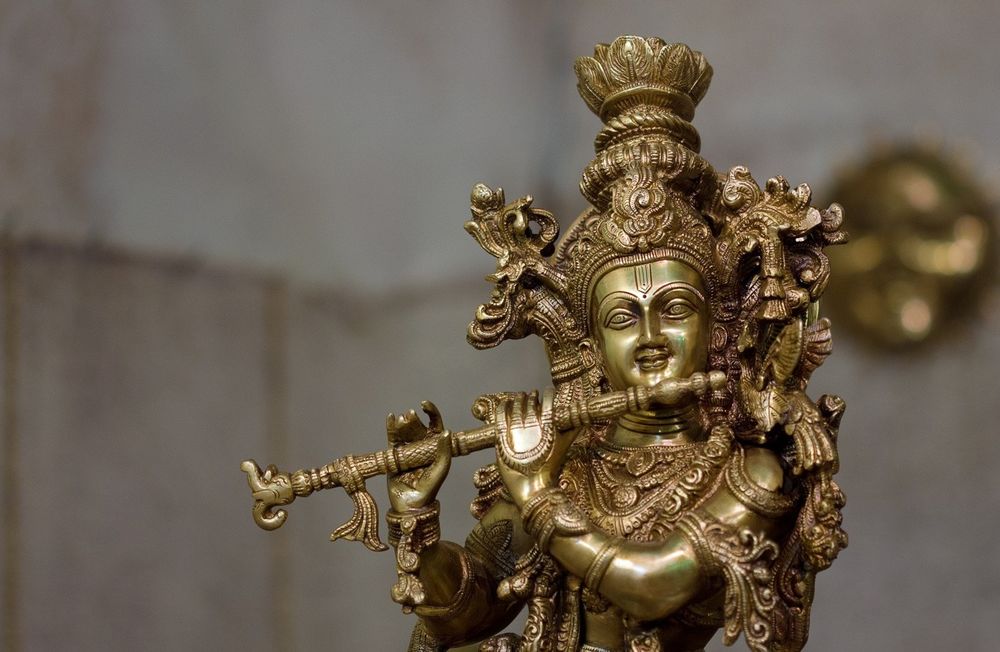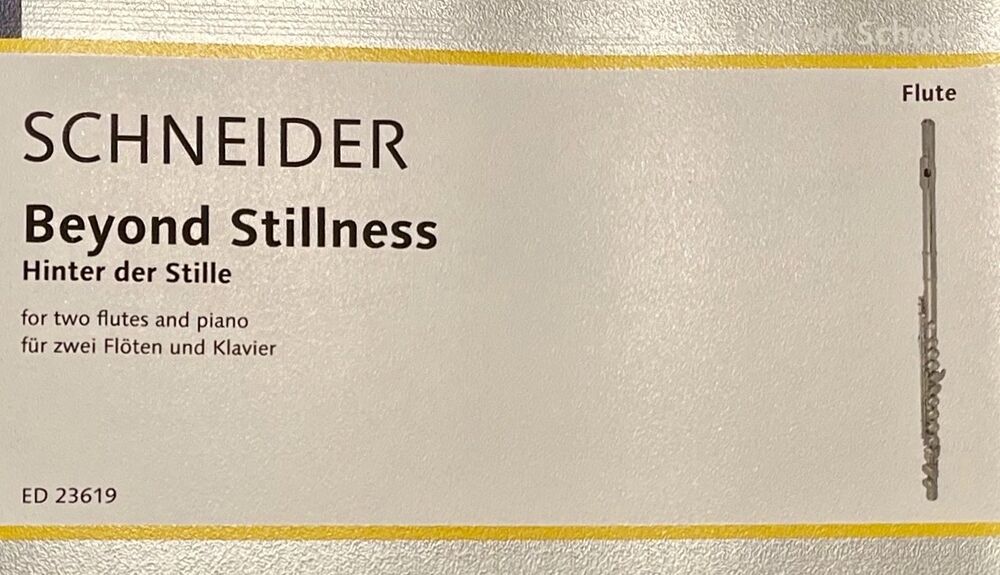
Category: Chamber Music
BEYOND STILLNESS / HINTER DER STILLE, Sutras for 2 flutes & piano (or small ensemble).
In Eastern spirituality, sutras are aphorisms that attempt to express the essence of all knowledge or wisdom in a concise form. Their origin can be found in the Indian Vedas and Sanskrit literature, but they were primarily handed down in the doctrinal texts of East Asian Buddhism and Daoism. It is about the deepest layers of "being" that lie beyond the world of thought and beyond a lifestyle dominated by the ego. The key to this world is "stillness", which knows how to open an inner space in which the truth and creativity can then become manifest.
Movements: I: HEART SUTRA
II: KAMA SUTRA
III: DIAMOND SUTRA
Duration: 10 Minutes (3:10 – 3:00 – 3:40)
Publisher of notes/sheet music: Schott Music , 2022
Instrumentation: 2 concert flutes & piano
(* the piano as accompanying instrument can also be replaced by organ or string quintet or a small ensemble such as: "Harp, violoncello and percussion (incl. marimba)" or "piano, viola and percussion" or "organ, percussion and electronics". Any creative and atmospherically suitable realisation is conceivable.
Playing techniques:
The two flutes use new music techniques that are standard and are not specifically described in detail or required in nuances to be precisely executed. These include, for example, slap tongue, portamento/glissando, multiphonics (without precise fingering), "airy notes" as tone production with a lot of air noise up to the absence of a concrete tone, flageolets as dematerialised sounds, free vibrato shaping with accelerando/rallentando up to non-vibrato.
The playing instructions or graphic symbols basically leave room for improvisation and own design. What is important is the mystical basic character and a pull effect to captivate the audience with quiet vibrations and sound formations. If a playing technique needs additional time to build up the sound, the rhythm can also be freely adapted here.
Introduction: In Eastern spirituality, sutras are aphorisms that attempt to express the essence of all knowledge or wisdom in a concise form. Their origin can be found in the Indian Vedas and Sanskrit literature, but they were primarily handed down in the doctrinal texts of East Asian Buddhism and Daoism. It is about the deepest layers of "being" that lie beyond the world of thought and beyond a lifestyle dominated by the ego. The key to this world is "stillness", which knows how to open an inner space in which the truth and creativity can then become manifest.
This theme is also of great importance in modern spirituality. Authors like Eckhart Tolle explicitly point to the wisdom of the sutras, which needs to be brought into our time. For this reason, two books by Eckhart Tolle are recommended as an introduction: Stillness Speaks from 2003, or A New Earth from 2005.
Remarks to movements 1-3:
1: Heart Sutra as the Sutra of Supreme Wisdom is the most recited, copied and studied scripture in East Asian Buddhism. It is considered the most concise summary of the Buddha's 600-volume teaching on just one page. It focuses on "emptiness" as the fundamental essence of all things, the "sunyata" of Sanskrit as freedom from all attachment and from all conditioning of thought. The full title means "The essence of the sublime crossing over to the beyond shore of wisdom". The spiritual experience lies in recognising "form as emptiness - and emptiness as form". The musical material here is based on a free use of the scale of the "Rag Shree" (E - F - G# - A# - B - C - D# - E).
2: Kama Sutra as verses of desire and the power of evolution come mainly from the book of Vatsayayana Mallanaga and are known to the public mainly as vulgarised texts on sexuality and eroticism. In the temples of Hinduism as well as in the Daoist texts on sexuality, it is unmistakably about concrete lust and passion. However, in the background it is about a transformation of the joy of life into the divine and about a guidance to a fulfilled life of the body also in the material world.
3: Diamond Sutra is the "diamond-splitting perfection of wisdom" from a sermon by Buddha. It dates from the first century of our era and is an influential text in East Asia - and especially in the Zen tradition. It comprises 32 sections. Its recitation lasts 45 minutes. The central equation "emptiness = form / form = emptiness" also leads here to the wisdom that the emptiness of all phenomena ("all beings... are beeingless") leads to enlightenment. With the world of forms, names and perceptible facades we deceive ourselves, because everything is nothing ("the logic of not"). True meaning can only lie beyond thoughts and words. The musical material in the Diamond Sutra is based on the use of the scale of the "Rag Todi" (C - Db - Eb - F# - G - Ab - B - C). At the end, the essential mantra "Gate - Gate - Paragate - Parasamagate - Bodhi Svaha" is heard as vowel colourations (spoken into the flute with free fingering). - Gone, Gone over, Gone all over, O what an awakening, blessing.
Dedication: Cordially dedicated to the flute Duo Agata & Lukasz Dlugosz
World premiere: 17.06.2023, Posen/Poland
Performers at world premiere: Lukasz Dlugosz und Agata Kielar-Dlugosz (Flöten), Andrzej Jungiewicz (Klavier) beim Posener Frühling in Polen: „Międzynarodowy Festiwal Poznańska Wiosna Muzyczna”
























